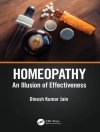The Secondary Insults after ICH: From Mechanisms to Clinical Translation mainly describes the clinical signs and biomarkers of the secondary insults following ICH. The recommendations for prevention and treatments of the targeted biomarkers and available clinical approaches are provided. This book is for professional experts and students of neurology and neurosurgery. Intracerebral hemorrhage (ICH) is an often fatal type of stroke. If the patient survives the ictus, the resulting hematoma within brain parenchyma triggers a series of adverse events causing secondary insults and severe neurological deficits. The secondary insults after ICH mainly result from hematoma component toxicity and hematoma expansion. So, treatment with blood toxicity, prevention from hematoma expansion and the timely removal of hematoma are essential to reduce deleterious pathological processes and improve clinical outcomes in patients suffering from ICH. This work is divided into three chapters. In Chapter One, the mechanisms of secondary brain insults after ICH are discussed and key aspects associated with the oxidative stress and inflammation resulted from hematoma toxicity are outlined. Afterwards, the corresponding interventions are introduced. In Chapter Two, available information of hematoma expansion from clinical signs to molecular mechanisms are provided, and potential intervention strategies are discussed. Accumulating evidence suggests that multiple clinical markers such as coagulation/hemostasis dysfunction, higher blood pressure and BRAIN scores, higher serum glucose and/or glycosylated hemoglobin A1c, serum creatinine, Factor XIII and international normalized ratio (INR), lower serum cholesterol or LDL cholesterol, and fibrinogen may correlate with incidents of hematoma expansion. Furthermore, activation of several molecular pathways (i.e. plasma kallikrein, von Willebrand factor, N-methyl-D-aspartate and its receptor, cytokines/ adipokines, cellular fibronectin and apolipoprotein EIu2 allele) may lead to hematoma expansion. In Chapter Three, the endogenous hematoma scavenging system and potential intervention strategies to facilitate hematoma resolution are discussed. Endogenous garbage cleaning systems (also known as "scavenger receptors") play important roles in the regulation of hematoma resolution in ICH. The authors try to illustrate how the endogenous garbage-cleaning system or scavenger receptors system in the brain work together to remove blood from the brain and reduce secondary brain insults, and presents potential clinically relevant molecular targets that could be harnessed to speed up this process via the endogenous phagocytosis. Meanwhile, guidelines of recommendations for clinical management of ICH are provided
Gaiqing Wang
Secondary Insults after ICH [PDF ebook]
From Mechanisms to Clinical Translation
Secondary Insults after ICH [PDF ebook]
From Mechanisms to Clinical Translation
Купите эту электронную книгу и получите еще одну БЕСПЛАТНО!
Формат PDF ● страницы 156 ● ISBN 9781536101454 ● редактор Gaiqing Wang ● издатель Nova Science Publishers ● опубликованный 2016 ● Загружаемые 3 раз ● валюта EUR ● Код товара 7216054 ● Защита от копирования Adobe DRM
Требуется устройство для чтения электронных книг с поддержкой DRM












